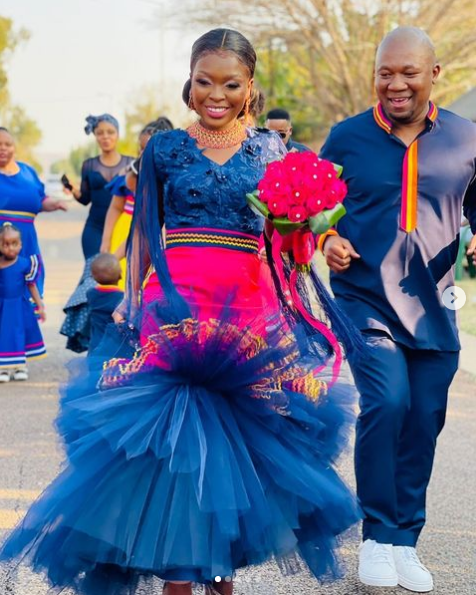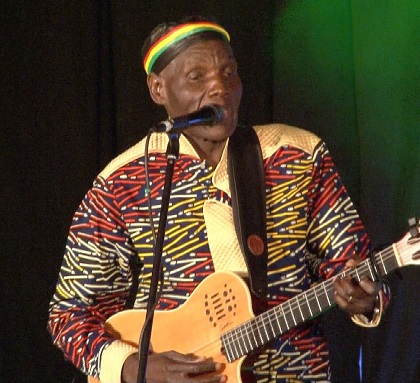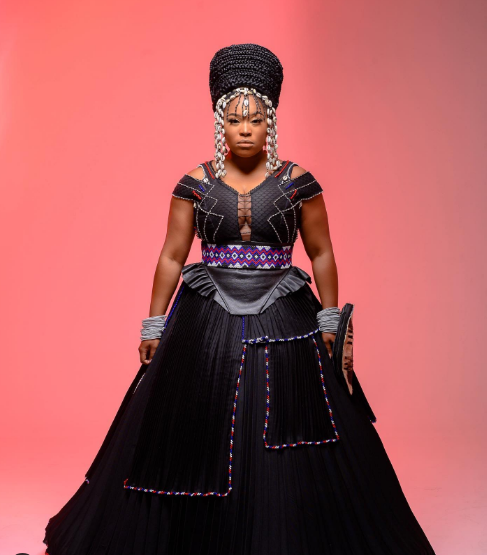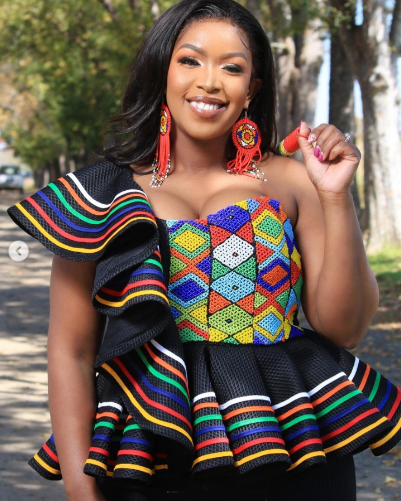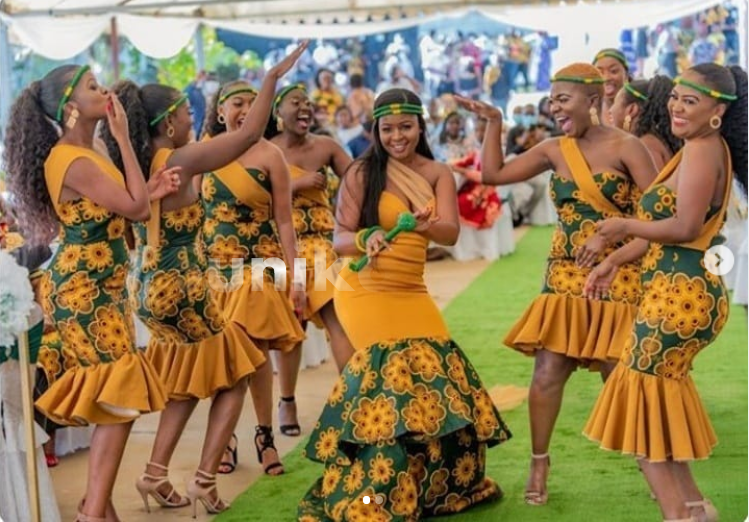
What is Handfasting
Handfasting is an ancient ceremonial tradition that symbolizes the union and commitment between two individuals. With roots dating back centuries, this ritual has gained renewed popularity as a meaningful alternative to modern wedding ceremonies. Derived from various cultural practices, handfasting holds deep symbolic significance and allows couples to personalize their union in a unique and memorable way.
Origins and Cultural Significance: Handfasting has its origins in different cultures and regions across the world. It traces its roots back to ancient Celtic traditions, where it was practiced as a form of temporary marriage or betrothal. In Scotland, for example, handfasting was recognized as a legally binding contract until the 18th century. It was also observed in Norse, Germanic, and Pagan cultures, each with its own customs and rituals.
What Happens During The Handfasting Ceremony
During a handfasting ceremony, several key elements and actions take place. The specific details may vary depending on cultural traditions and personal preferences, but here is a general overview of what typically happens during a handfasting ceremony:
-
Introduction and Welcome: The officiant or the couple themselves welcome the guests and set the tone for the ceremony, expressing the significance of the handfasting ritual.
-
Explanation of Handfasting: The officiant may provide a brief explanation of the history, symbolism, and purpose of handfasting to the guests, ensuring everyone understands the significance of the ceremony.
-
Exchange of Vows: The couple shares their vows or promises to each other, expressing their love, commitment, and intentions for their future together. These vows can be traditional, personalized, or a combination of both, reflecting the couple's unique relationship.
-
Binding of Hands: The central act of handfasting is the binding of the couple's hands. Cords, ribbons, or a specially designed handfasting knot are used to symbolically intertwine or tie the couple's hands together. The officiant or a designated person may perform this action, while the couple faces each other.
-
Blessings, Readings, or Prayers: Handfasting ceremonies often incorporate blessings, readings, or prayers that hold personal significance to the couple. These can be religious, spiritual, or secular in nature and may involve invoking higher powers, expressing gratitude, or sharing meaningful passages or poems.
Symbolic Actions and Rituals: Handfasting ceremonies often include additional symbolic actions, such as:
-
Jumping the Broom: In some handfasting ceremonies, the couple may choose to incorporate the tradition of "jumping the broom." This involves the couple jumping over a broomstick together, symbolizing the transition into their new life together.
-
Exchange of Rings or Tokens: Alongside handfasting, couples may also choose to exchange rings or other symbolic tokens of their commitment and love.
-
Closing Remarks and Pronouncement: The officiant concludes the ceremony with closing remarks, offering well wishes and advice for the couple's journey ahead. They then formally pronounce the couple as partners or spouses, depending on their legal status.
-
Unbinding of Hands: After the pronouncement, the cords or ribbons used to bind the couple's hands are untied or released, signifying the freedom and individuality of each person within their committed union.
-
Celebratory Moments: Following the ceremony, the couple and their guests may participate in additional rituals, such as toasting, sharing a meal, or engaging in other celebratory activities to mark the occasion.
It's important to note that these elements are not fixed, and couples have the freedom to personalize their handfasting ceremony to align with their beliefs, cultural backgrounds, and preferences.
Handfasting Symbolism and Rituals
Handfasting rituals often incorporate various symbolic elements, allowing the couple to infuse their own beliefs, values, and cultural heritage into the ceremony. Some common symbolic actions and rituals include:
-
Binding of Hands: The central act of handfasting involves the intertwining or binding of the couple's hands with cords, ribbons, or a specially designed handfasting knot. This represents their union and the promise to support and walk together through life.
-
Vows and Promises: Couples exchange vows or promises to express their commitment, love, and intentions for their shared future. These vows can be traditional, customized, or a combination of both.
-
Blessings and Prayers: Handfasting ceremonies often include blessings, prayers, or readings that hold personal significance to the couple. This can involve invoking spiritual entities, nature, or other symbolic elements.
-
Jumping the Broom: In some handfasting ceremonies, the couple may choose to incorporate the tradition of "jumping the broom." This action symbolizes sweeping away the past and entering into a new phase of their lives together.
-
Exchange of Rings or Tokens: Alongside handfasting, couples may also choose to exchange rings or other tokens of their commitment and love.
Modern Adaptations: In contemporary practice, handfasting ceremonies are often performed in addition to or as an alternative to traditional wedding ceremonies. Many couples opt for handfasting to celebrate their union in a more personalized, spiritual, or non-religious manner. The flexibility of the ritual allows for adaptations and interpretations that resonate with the couple's values and preferences.
Is Handfasting a Legal Marriage
The legality of handfasting as a marriage ceremony varies depending on the jurisdiction and local laws. In some regions, handfasting may be recognized as a legally binding marriage, while in others, it may have more symbolic or spiritual significance without legal implications. It is important to consult the marriage laws and regulations of the specific country or state where the ceremony is taking place to determine the legal status of handfasting as a marriage. Additionally, couples often complete the necessary legal requirements, such as obtaining a marriage license, before or after the handfasting ceremony to ensure the legal validity of their union.
Handfasting Vs Marriage
Handfasting and marriage are two different concepts related to commitment and partnership. Here is an outline comparing the two:
- Origins and Cultural Significance:
- Handfasting: Handfasting has its roots in ancient traditions, particularly in Celtic, Norse, Germanic, and Pagan cultures. It was historically a form of temporary marriage or betrothal.
- Marriage: Marriage is a social and legal institution that has existed in various forms across different cultures throughout history. It typically involves a recognized legal contract and is often associated with religious or cultural ceremonies.
- Symbolism and Rituals:
- Handfasting: Handfasting ceremonies involve the symbolic binding of the couple's hands together with cords or ribbons, representing their commitment and unity. The specific rituals and symbolic actions can vary, allowing for personalization based on the couple's beliefs and preferences.
- Marriage: Marriage ceremonies may involve various rituals and traditions, such as the exchange of vows, rings, and the pronouncement of the couple as legally married. These rituals often vary depending on cultural, religious, or personal preferences.
- Legal Recognition:
- Handfasting: Handfasting ceremonies themselves do not typically have legal standing as a marriage unless they are performed in accordance with the legal requirements of a particular jurisdiction.
- Marriage: Marriage, when recognized by the law, carries legal rights and obligations, including property rights, inheritance rights, tax benefits, and the ability to make decisions on behalf of one's spouse.
- Cultural Context and Perception:
- Handfasting: Handfasting is often seen as an alternative or additional ceremony to a traditional wedding. It may be chosen by couples seeking a more personalized, spiritual, or non-traditional approach to their commitment.
- Marriage: Marriage is widely recognized as the traditional and socially accepted form of formal commitment between two individuals. It carries cultural significance and often signifies a lifelong partnership.
- Commitment and Duration:
- Handfasting: Handfasting historically had variations, including temporary or trial marriages. However, in modern practice, it is more commonly symbolic and does not necessarily imply a fixed duration or legal commitment.
- Marriage: Marriage is generally regarded as a long-term or lifelong commitment between two individuals, with legal and societal expectations of mutual support and fidelity.
It's important to note that the distinctions between handfasting and marriage can vary based on personal beliefs, cultural traditions, and legal requirements, as they are both diverse and can be interpreted differently by different individuals and communities.
Conclusion: Handfasting is a beautiful and ancient ritual that celebrates the bond between two individuals embarking on a shared journey of love and commitment. This symbolic ceremony offers a meaningful alternative to conventional weddings, allowing couples to honor their unique relationship and infuse their own cultural traditions, beliefs, and values. By embracing the rich history and symbolism of handfasting, couples can create a memorable and deeply personal ceremony that reflects their love and unity.


















